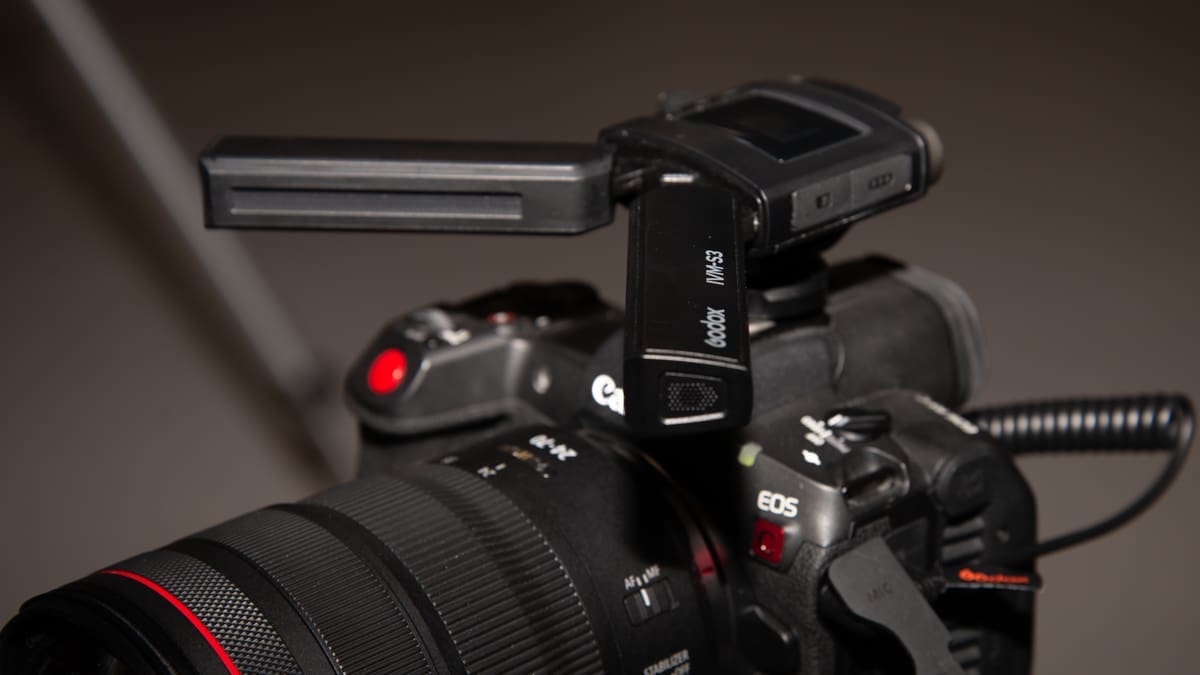Godox IVM-S3 review
The GODOX IVM-S3 is incredibly quick to set up, and I used it for several projects over a month-long test period. The main uses were direct-to-camera presentations, group interviews, a music gig, and a play. In all situations, the standout feature was the speed of setup and use.
Simply plug it in, switch it on, check levels, set the antenna to the required position, and then focus on the camera. The ability to adjust the input gain with the large dial and quickly switch the low-pass filter on and off adds to the ultimate ease of use. As a standard on-camera mic system, there's little to fault in all scenarios.
The ability to adjust the spread of the antenna maximizes the audio capture, and monitoring through headphones is convenient. Once set, I found that I didn't need to think about the unit again until editing. 

Digging deeper into use and performance, several areas are worth more in-depth coverage. The first is the adjustable Sound-Picking Range. Essentially, this involves adjusting the antennas, which hinge from the main unit to adjust the audio capture field.
Bringing the antennas together forms a directional cardioid mic. While it's not quite a shotgun mic, it closely focuses on the audio in front, helping to isolate surrounding noise. Opening the antennas increases the scope of the audio collection, giving plenty of options in various scenarios.
The onboard gain adjustment balances vocals against background noise. Background noise is always an issue, and the IVM-S3's single-option low-cut filter reduces consistent background rumbles like air conditioning and traffic while maintaining rich vocal audio. It's a decent balance, although not as advanced as some alternatives that remove all noise below 150Hz.
The audio quality from the mic is excellent. When used in close range with the mics together, it performs similarly to a mid-range shotgun mic, though it picks up a bit more ambient noise due to the cardioid design. As the mics move to the second position, conversations in interview situations are well captured within a two-meter range, balancing depth and clarity.
Spreading the mics to the widest position captures audio from all around, and turning on the rear mic allows overlaying your vocals for a good mix and balance.
This mic is a one-design-fits-all approach to audio recording, and I like it a lot.
Its plug-and-play simplicity captures high-quality audio that most users will be more than happy with.